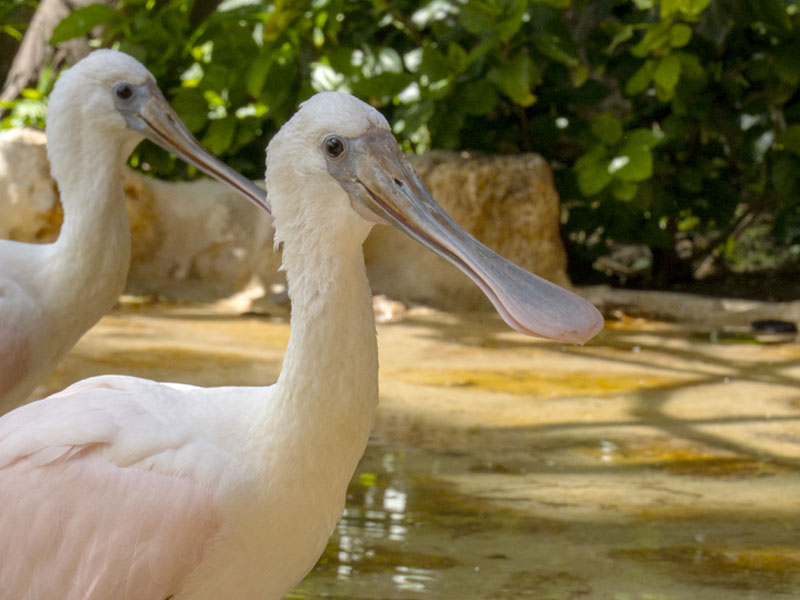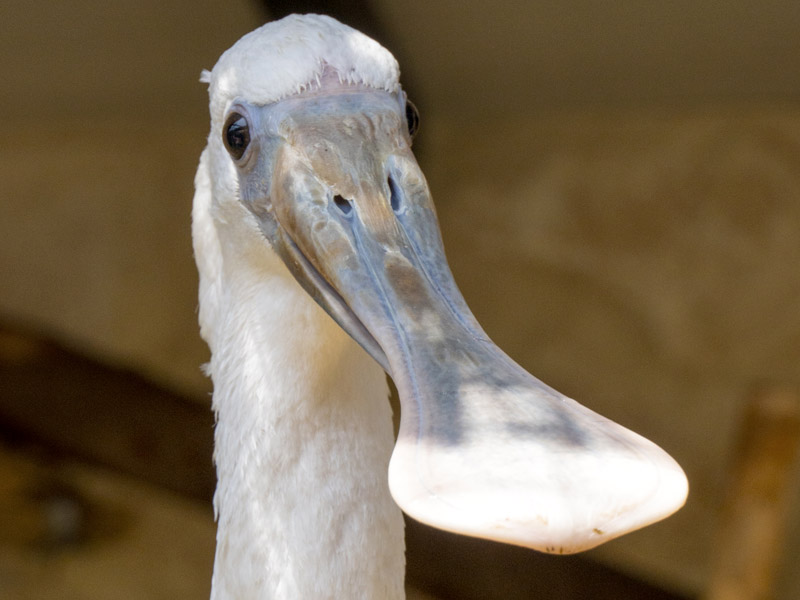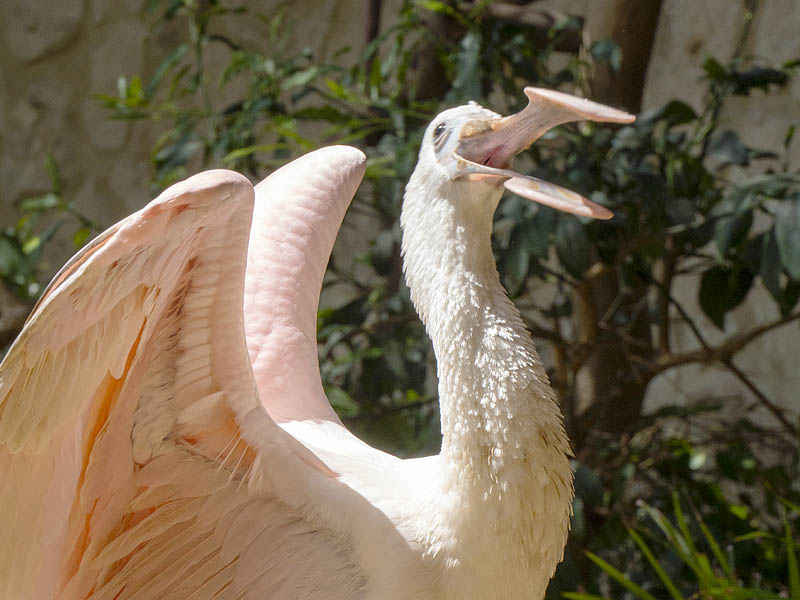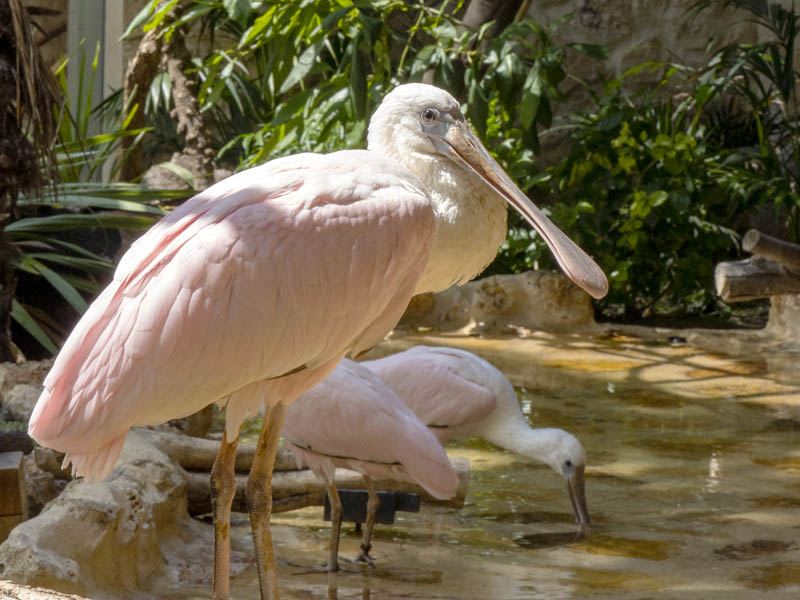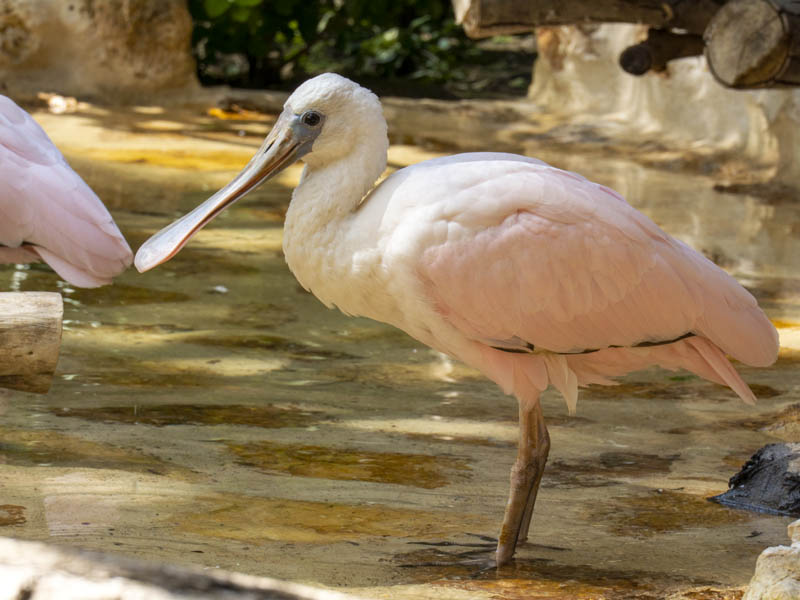The roseate spoonbill, also known as sibiya, is easily recognised by its long beak, broad at the base and flat at the tip, characteristic of the spoonbills, a subfamily of pelecaniform birds with six subspecies that occur in Europe, Africa, Asia, America and Oceania. It is the only one found in the Americas and differs from the other spoonbills by the strong reddish or pinkish colour of some feathers, especially on the wings, in adult specimens, while the other five species are white. Its nostrils are located close to its head, so that it can breathe with its beak submerged in water. Although the arrangement of its eyes helps it in its search for food, its sense of touch is of great importance.
To find its food, the roseate spoonbill moves its spoon-shaped beak back and forth through mud and shallow water, closing it quickly when it detects a crustacean, larva, mollusc, amphibian or fish on which it feeds. It spends many hours a day feeding and, in addition to obtaining its prey, this movement contributes to oxygenating the sediments, facilitating the decomposition of organic matter and promoting the health of the aquatic ecosystem in which it lives.
The roseate spoonbill mainly occupies areas with aquatic vegetation, whether wetlands, rivers, mangroves or estuaries, with a preference for fresh water, although it can inhabit salt water. It shares its habitat with other birds, such as herons or ibis, and nests in reed beds or trees, where it lays around three eggs that are incubated by both parents, who then feed the chicks by regurgitation. Breeding behaviour is monogamous within the same breeding season.
